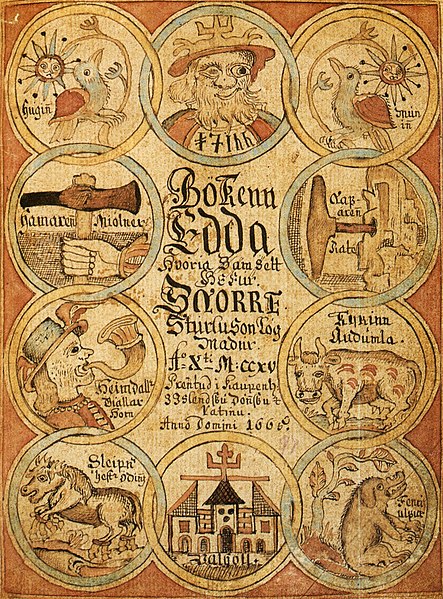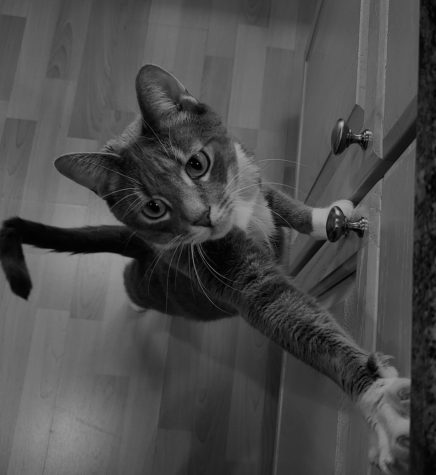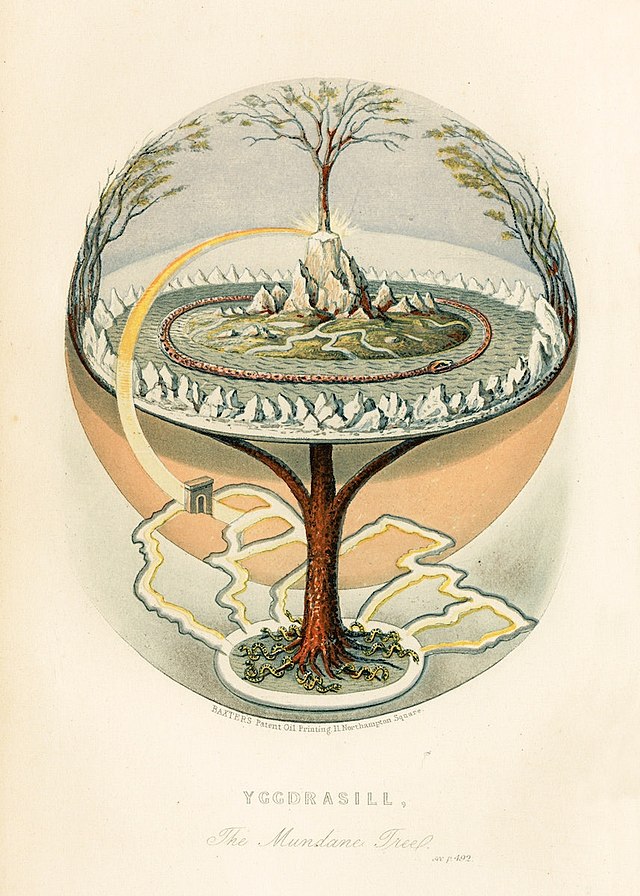Beyond Marvel’s Thor: Discover the Beginnings of Norse Mythology
Every mythology has an interesting creation myth, but Norse mythology has quite a strange, sometimes ominous, and at other times wondrous stories that formed the universe of the mythology. From a nine-headed giant, to the first humans being sculpted from logs, or a messenger squirrel who carries messages throughout the world tree, the beginnings of Norse mythology never fail to be intriguing.
Most of the information on Norse mythology is attributed to 12th and 13th century Icelandic poet and historian, Snorri Sturluson. He is responsible for writing the Prose Edda, using information from the older Poetic Edda. However, the text is old and often written in poems, so it may be difficult to understand. In turn, author Neil Gaiman decided to take the Eddas and turn them into a story-like narration in a book titled Norse Mythology.
Ginnungagap – Creation in Norse Mythology
To understand creation in Norse mythology, one must first understand what was before. Before the nine realms formed the “world tree” Yggdrasil, nothing existed. Nifelheim was to the north, known as the dark world, and was frozen, grey, and surrounded by formless mist. To the south was Muspell, bright, eternally lit with flames, and flowing with lava. Where the leaden mists and fiery sparks met, stood Surtr. He existed before the gods, standing in the place between and continued to stand there, waiting, sword in hand, for Ragnarök, where the forces of order and chaos would clash in cataclysm.
Between the two worlds was an abyss where the rivers of Nifelheim flowed. This void was known as Ginnungagap, the “yawning gap.” Over time, the morphing flames and shadowy mists gradually created colossal glaciers, travelling north, to the land of mist, forming snow and hail. In the south, the glaciers met the wind of Muspellheim and in turn, created the conditions of spring.
Ymir & the First Gods
When the ice of the “before” melted there came a being. It was large and looked like that of a person— the first ancestor of the giants (Old Norse: jötnar). It towered high, much more than any other giant would. It was neither a man nor woman, but both. It is often referred to as “he” and called himself Ymir. Ymir was not the only being to come from the melting ice. There also came a hornless cow, far greater than any cow we know today. She licked blocks of salty ice for nutrition and then streamed her milk, which nourished Ymir. Ymir named the cow Audumla (Old Norse: Auðumbla or Auðhumla).
Audumla continued to lick the blocks of ice, and slowly revealed the features of the first ancestor of the gods, Buri. While Ymir slept, he gave birth to the next forebear of the jötnar. From under his left arm a male and female giant formed and from his legs a six-headed son. Buri married a female giant and they had a son called Bor. Bor married the giantess Bestla, and together they begat the first gods— three sons known as Odinn (Old Norse: Óðinn), Vili, and Vé.
Creation of Midgard
The brothers attempted to travel to see the strange “world” they had been born into, but the conditions proved fatal. They were trapped in Ginnungagap. No sea, sky, grass, nor rocks, trees or stars existed. No true world existed. In time, the brothers discussed and decided it best to fill the void with land and life. It was then they killed the very being that had brought them life, Ymir, and from his corpse would form the world.
Ymir’s blood surged, like that of a violent sea and killed all giants but Bergelmir, Ymir’s grandsons and his wife. The next giants descended from them. From Ymir’s flesh came soil; from his crushed teeth rocks and bones came the towering mountains. The seas were his blood and sweat and the sky was formed by the inside of his skull. The clouds that bring the world weather were the brains of Ymir. Finally, to keep the newly created world safe from the jötnar they created a wall from Ymir’s eyelashes. That is how the world of the humans, Midgard, came to be.

Ask & Embla – The Creation of Humans
The world may have been made, but no life lived there. The brothers travelled far and wide, discovering the wonders of Midgard. Eventually, they came across two dead logs, one of Elm and one of Ash. From the logs the brothers crafted the first humans. Each brother gave them gifts: Odinn had bestowed them life. Vé gave them their shape and form. Vili gave them will, intelligence, and drive. Together, they gave them names. The woman was Embla and the man was Ask. They were the bygone ancestors of all humanity and they are responsible for the title given to Odinn, the all-father, the bringer of human life and eventual ruler of all of the gods.
Yggdrasil – The World-Tree
Yggdrasil is the colossal world-tree, uniting all nine realms. The first root falls into the realm of Niflheim, one of the places that existed before the giants and the gods. In the centre of Niflheim is an ever-flowing spring called Hvergelmir. A dragon lives in these waters, Nidhogg (Old Norse: Níðhöggr), where it knows at the roots of the great ash tree. The next root travels into the land of the Jötnarr and to Mimir’s well, which holds all knowledge. Upon the tallest branches of Yggdrasil sits an eagle, who knows many things and there is a hawk, who perches between the eagle’s eyes. There is a messenger, a squirrel called Ratatoskr. Ratatoskr collects information and gossip from Nidhogg and relays it to the eagle and hawk. However, the squirrel often lies and enjoys provoking anger in beings. Grazing on the branches and foliage of the world-tree are four stags and below, biting at the roots are a mass of uncountable snakes. The tree can be climbed, but the gods travel between realms using the Bifrost, a rainbow bridge. However, only the gods may use it, for if a giant or troll stepped foot upon it, their feet would burn.
Asgard, home of the Æsir gods, is the first realm which Odinn rules. Alfheim is where the light elves dwell, and the elve are known to be as beautiful as the sun or the stars. Next is Nidavellir or sometimes Svartalfheim, which holds the dwarves which are also known as the dark elves. The dwarves live under mountains and forge remarkable creations. Midgard is the central realm, home to humans.
Jotunnheim or Jotunheimr is the land of the Jötnar, the frost and mountain giants. The Vanir gods live in Vanaheim, but many live in Asgard alongside the Æsir gods, for they have been united by peace treaties. There is Niflheim, the dark world, but there is also Muspell, where Surtr awaits the inevitable Ragnarök. Finally, there is Hel, named after its ruler and goddess of death, in which those who do not die in battle go to the afterlife.
The Norns – The Masters of Fate
The final root of Yggdrasil travels to spring in Asgard, where each day, the gods gather and hold council. It is there where they will gather upon the eve of Ragnarök, before the final battle. The gathering place is known as the well of Urd (Old Norse: Urðr). Three sisters known as the norns, upkeep the well and ensure that the roots of Yggdrasil remain healthy. The well belongs to Urd, who is one’s fate, destiny, and past. Verdandi (Old Norse: Verðandi) means “becoming” and she is the present. Skuld may mean “that which is intended” or “debt”, and she is responsible for the future. The norns decide one’s life and there are not just three— there are giant, dwarf, and Vanir norns. Whoever they may be, the norns shape one’s life, which may be good, difficult, or perhaps twisted.
Conclusions
For this is the world of Norse mythology, wondrous, twisted, and odd. But, the mythology is not just this. There are several interesting characters, some good, some evil, while others walk the line of both. The characters are complex, interesting, some liked and some hated. Their interactions range from formal, to strange, to completely absurd, but one thing is for certain, they are great stories from times of old that have survived for thousands of years and still bring enjoyment to people today.

Sam Stokem is a senior at LRHS and is writing for the Lancer Ledger for their third year in a row. They are glad to continue to inform people about the...







